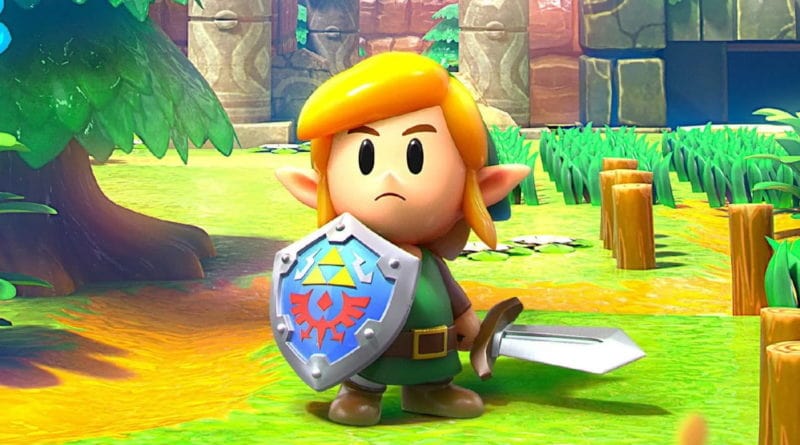The Legend of Zelda: Evolution and Breaking Expectations


If you try to describe what makes up a good Legend of Zelda game, you might end up with a few consistent elements. Of course, there’s exploration of the game’s world and dungeons, and finding and collecting different items and weapons that will make the game’s hero, Link, stronger and more adept at exploring. It’s almost always set in the land of Hyrule, which is in a crisis because of the terrible machinations of an incarnation of evil incarnate Ganon.
But how do these games go about the standard Zelda tropes? You’ll get a different answer depending on what game you’re playing. You see, Zelda’s 33-year history is marked by constant reinvention, often bucking expectations and trends to make each entry in the storied franchise memorable and unique.
So let’s skip here and there through Zelda history, and look at the major games that shook up the formula and brought in legitimate changes to the game.
1. The Legend of Zelda: The Classic Top-Down Adventure
The original Legend of Zelda was inspired by very specific memories from co-creator Shigeru Miyamoto’s childhood: he used to spend time exploring the countryside in his home of Sonobe, Japan. His adventures brought him to hills, caves, and forests, and he wanted to bring that experience to a “pocket garden” that anyone can pick up and play on the Nintendo Famicom.
And thus, The Legend of Zelda was born. Set in the land of Hyrule, you play Link, a young boy who must explore the land and figure out its mostly obtuse clues to find different dungeons that contain the eight pieces of the relic, known as the Triforce. Only upon completing the Triforce of Wisdom can you enter the final lair, defeat the evil Ganon, and rescue the princess Zelda.
Being the original, it introduces a majority of elements that define the franchise: swordplay, exploration, puzzle-solving, collecting items and power-ups, and more. For a device as primitive as the Famicom, this game is a massive achievement, as creating an open world with the limitations of 8-bit technology is extremely difficult.
2. A Link to the Past: Perfecting the Formula
A sequel, Zelda II: The Adventure of Link, was released a year after the original, but it was a vastly different game that incorporated 2D side-scrolling and RPG elements into the gameplay. This is also where we first see Dark Link, an evil counterpart to the game’s protagonist who would eventually become a recurring nemesis. It was a daring reinvention of the Zelda formula, but it strayed too far from the first game, and it wasn’t as well-received as the original. It would take a few more years and the release of the brand-new Super NES before Nintendo would create another Zelda game, in 1992.
A Link to the Past is a return to the top-down aesthetics of the original, but it is so much more than a return to form. This game is the result of a period of unbridled creativity of the development team led by Kensuke Tanabe and Yoshiaki Koizumi. The jump from 8- to 16-bit systems proved to be an advantage, as Nintendo now had the resources needed to flesh out the world of Hyrule, creating beautiful vistas, character sprites, and sprawling mazes and dungeons.
Princess Zelda’s role is also expanded here. Although she was still a damsel in distress that needed to be rescued in the beginning, she is rescued early on in the game, and she provides some guidance and advice to Link as he jumps between this reality and the Dark World in search of The Master Sword.
From this point on, any top-down 2D Zelda game is directly influenced by A Link to the Past. The swordplay, the game physics, character designs, they all share a lineage that directly goes back to this game. Pick up this game right now, in 2019, and you will be surprised at how modern this game feels. And more Zelda staples are also introduced here, like The Master Sword, the ocarina, and the introduction of alternate worlds that the hero must jump to.
A Link to the Past is also firmly set as a prequel to the first two Zelda games, introducing the concept of reincarnation to the series–this Link is a different one from the first game. Unless otherwise stated, each succeeding main game in the franchise is set in a different time period, and features reincarnations of Link, Zelda, and Ganon.
This game also had a direct sequel released on the Gameboy, Link’s Awakening (more on that later!).
3. Ocarina of Time: The Big Leap to 3D
With the dawn of the 64-bit era, games everywhere have been jumping to 3D. The Playstation debuted, among other things, Final Fantasy VII, which brought the iconic JRPG series into the third dimension. Nintendo’s own Nintendo 64 brought Mario into 3D with Super Mario 64, and people waited with bated breath to see how Nintendo planned to bring The Legend of Zelda into this new era of gaming.
The Legend of Zelda: Ocarina of Time not only met expectations, but surpassed them. It was a masterful translation of everything that made Zelda good into 3D, and also brought with it a compelling story that dealt with Link trying to stop the rise of Ganondorf, the king of the Gerudo tribe. To stop Ganondorf from obtaining the Triforce, Link must travel all of Hyrule and jump through time with the titular ocarina and awaken the Seven Sages, who can assist him in sealing the evil king forever.
The Princess Zelda’s role here is even expanded, as she is secretly Sheik, a mysterious warrior who guides Link through his mission to recruit the Seven Sages. At the games’ climax, Sheik reveals her true identity and her purpose as the Seventh Sage.
Ocarina of Time takes the gameplay and world building of the previous Zelda games and, with the transition to 3D, gives it a larger sense of scale. With the use of the Ocarina of Time, music also starts to play a major role in Zelda gameplay, and memorable songs from the soundtrack–like Zelda’s Lullaby–are often attributed to this game.
Subsequent 3D entries in The Legend of Zelda series often built on the mechanics introduced in both A Link to the Past and Ocarina of Time, often upending expectations by switching up themes. Majora’s Mask was a direct sequel to Ocarina that dealt with dark themes, then Nintendo switched gears with the bright and cartoonish Wind Waker.
This game proved to be initially unpopular to fans so Nintendo overcorrected and doubled down on grimness and grit with Twilight Princess, and finally tried to return to form with Skyward Sword. While that last game was initially well-received, over time it became apparent that the players found the game to be too restrictive, and that the tutorials that the game tried to impose for lesser-skilled players felt too much like hand-holding. Thus, Nintendo decided to do away with the rules and try a new direction to Zelda.
4. Breath of the Wild: Blowing Up The Formula
Release alongside the Nintendo Switch in March 2017, Breath of the WIld did away with so many of the conventions that held the Zelda games together. Nintendo took a look at the philosophy that created the original Zelda back in 1986, and they made exploration and discovery a priority.
The result was a Zelda game unlike another–outside of an initial tutorial area, players have very little guidance on how to play the game. We are given a true open world in Hyrule, where players can go anywhere they want, climb anything they want, and–thanks to the game’s insane physics engine–this is also a world they can manipulate almost any way they want.
From the beginning, you are given the option to go to Hyrule Castle where Ganon is being held back by Zelda through the sheer force of her will, but doing so will definitely result in your death. So you are encouraged to bring Link around Hyrule, find different weapons and power-ups, and fight different enemies to power Link up, and to enhance your skills as a player.
Breath of the Wild is one of the greatest games of this decade, and deservedly so. You owe it to yourself to pick it up and lose 200 hours of your time playing this game.
5. Link’s Awakening: A Return to Form
Alongside Nintendo’s big 3D releases, they have also been maintaining the 2D/top-down Zelda games with smaller, handheld releases. And first of these games is Link’s Awakening, released in 1993 for the original Gameboy.
Inspired, of all things, by Twin Peaks, Link’s Awakening found the titular hero stranded in Koholint Island, where he needs to find eight musical instruments to wake up the Wind Fish. Only then is he allowed to go home.
This was a weird game. As this game was originally done as a side project, with very little oversight from the upper echelons of Nintendo, the developers were often allowed to add anything they want, entering so many of their discarded ideas from A Link to the Past into this game.
Zelda’s first foray into handheld gaming proved to be successful, with Nintendo developing a steady stream of smaller games that built upon A Link to the Past that may not push the envelope as much, but they are inventive in their own way.
But now that Nintendo merged their consoles and handheld devices with the Nintendo Switch, Link’s Awakening has been remade for 2019. Utilizing a new art style that evokes claymation, this new version of Link’s Awakening is overwhelmingly cute, but plays so much like the original. Outside of the graphics, barely anything has been updated in this remake, which only proves that Nintendo’s magic touch can make games timeless.
Now if you’ll excuse me, I’ll be picking up my Switch, because I have two more instruments to go so I can finally wake up the Wind Fish.
Recent Posts
Cloud-based AI prone to toxic combinations, leaves sensitive data vulnerable: report
Cloud and AI are undeniable game changers for businesses. However, both introduce complex cyber risks…
Timeline of The Punisher’s arrest: What happened and what comes next?
March 11, 2025 will be a day many will look back on. On that Tuesday,…
A first in PH: Agri company earns ‘reared without antibiotics’ certification
You’ve probably heard of poultry raised in stress-free environments, but have you heard of poultry…
GAIN presents CEFR, Language Proficiency Initiatives to TESDA
Early Tuesday morning, March 11, I went to the Technical and Educational Skills Development Authority…
Tell the people that you love that you love them
It was a sad, sad day. While attending the Women’s Business Council Philippines Inc.’s Climate…
Exploring the Maldives
When you think of paradise, the Maldives inevitably comes to mind. Pristine beaches, turquoise waters,…


